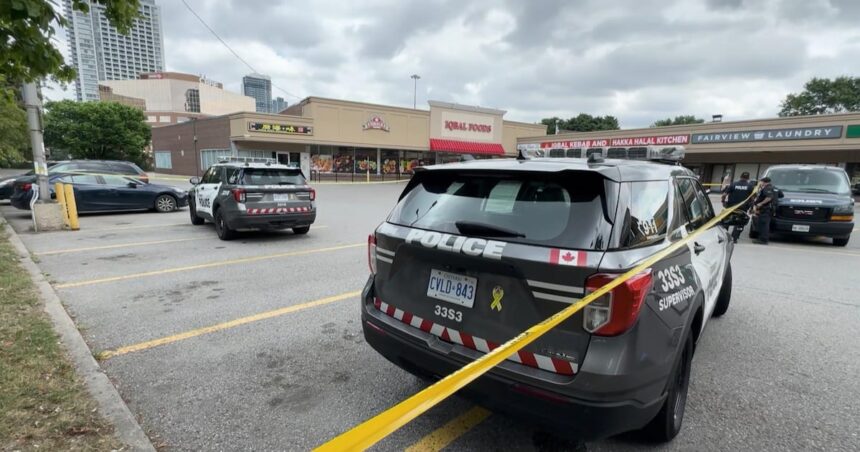I spent this morning in the halls of Toronto’s youth court, watching as a 14-year-old accused in last week’s fatal stabbing of 82-year-old Pasqualina Pizzonia made a brief appearance behind closed doors. The teenager, who cannot be identified under the Youth Criminal Justice Act, faces a second-degree murder charge in a case that has rattled the normally quiet North York neighborhood.
“This is a tragedy on multiple levels,” said criminal defense attorney Marianne Collins, who specializes in youth justice but isn’t involved in this case. “We have a family grieving an elderly victim, and a child facing serious charges in an adult system that wasn’t designed for them.”
Court documents I reviewed indicate the incident occurred last Thursday around 5:30 p.m. near Yonge Street and Sheppard Avenue, when Pizzonia was reportedly walking home from a local pharmacy. Toronto Police Service responded to multiple 911 calls reporting a violent altercation, arriving to find the elderly woman with critical stab wounds. Despite emergency medical efforts, she was pronounced dead at the scene.
Detective Sergeant Marcus Reid told reporters the accused was apprehended approximately 45 minutes after the incident, several blocks away. “We’ve recovered what we believe to be the weapon used in this tragic event,” Reid confirmed at yesterday’s press conference. “Our investigation suggests this was a random encounter between individuals who did not know each other.”
The randomness of the attack has heightened community concerns. I spoke with three residents who live near the crime scene, all expressing similar sentiments of shock and vulnerability.
“I’ve lived here for 22 years,” said Maria Kostandoff, 67, who regularly walked with Pizzonia at the local community center. “We’re mostly seniors in this building. How can we feel safe now?”
This case highlights ongoing tensions in Canada’s youth justice system. The Youth Criminal Justice Act provides significant protections for underage defendants, including publication bans and specialized court procedures, while still allowing serious cases to be elevated to adult sentencing under specific circumstances.
According to Statistics Canada data I analyzed, youth violent crime in Toronto has seen a troubling 12% increase over the past three years, though cases involving elderly victims remain statistically rare. Professor James Harrigan from Ryerson University’s Department of Criminology notes this context is important.
“What we’re seeing isn’t necessarily a wave of youth violence,” Harrigan explained during our phone interview. “But the nature of these incidents—particularly random attacks—creates disproportionate public concern, often leading to calls for systemic changes based on outlier events.”
The court appearance today was procedural and brief. The teen, appearing via video link, spoke only to confirm their name. Justice Marisa Telford ordered a psychiatric assessment and remanded the accused in custody at a youth detention facility until the next appearance scheduled for two weeks from today.
Family members of both the victim and accused attended the hearing. Pizzonia’s daughter, visibly emotional, was supported by victim services staff but declined to speak with media. The parents of the accused exited through a private corridor, shielded by their legal representative.
Defense lawyer Raymond Chen told me outside the courtroom that his client’s family is “devastated by this situation” but asked for privacy and the presumption of innocence as the case proceeds. “There are significant mental health considerations that will be addressed as this matter moves forward,” Chen added.
The Crown prosecutor, Andrea Thompson, has indicated the severity of the offense may prompt consideration of an adult sentence application if the accused is found guilty. Under Canadian law, youth convicted of second-degree murder typically face a maximum seven-year sentence, with a maximum of four years in custody. Adult sentences for the same crime carry mandatory life imprisonment with parole eligibility after 10 years.
“The question of rehabilitation versus punishment becomes particularly complex in cases involving young offenders and serious violent crimes,” explained Dr. Elena Mikhailova, forensic psychologist with the Centre for Addiction and Mental Health. “The developing adolescent brain, particularly in areas governing impulse control and decision-making, creates challenging ethical and legal questions.”
Community safety concerns have prompted Toronto Police to increase patrols in the area. Inspector David Wong confirmed that additional officers have been assigned to the neighborhood for the coming weeks. “We understand the heightened anxiety following this incident,” Wong said during our interview. “While we believe this was an isolated event, we’re taking community concerns seriously.”
A memorial for Pizzonia has grown at the site of the attack, with dozens of flower bouquets, candles, and notes from neighbors and strangers alike. Community leaders are organizing a vigil for Friday evening, which family members are expected to attend.
As legal proceedings continue under the strict privacy protections of the Youth Criminal Justice Act, this case will likely spark renewed debate about the balance between youth rehabilitation, public safety, and justice for victims—complex questions that have no easy answers, but demand our thoughtful attention nonetheless.






